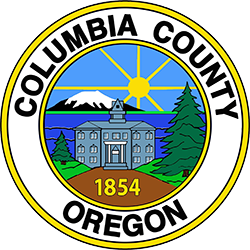Make a Plan
Make a Plan
It is important to put together an emergency plan in case you and your family are not together when a disaster strikes. Start the process by gathering your family together and making sure everyone knows what kind of hazards there are in your community (Stay Informed) and what you will do in case of an emergency.
An emergency plan should include the following:
- escape routes
- evacuation plans
- family communications
- utility shut-off procedures
- safety skills
- vital records and insurance information
- pet care
Learn more at Ready.Gov→
Create a printable Family Communications Plan→ or a Comprehensive Family Emergency Plan→
Escape Routes and Evacuation Plans:
An escape route for your home is an important part of your emergency plan. Start by drawing a floor plan of your home using a separate sheet of paper for each floor. Label each room and make two escape routes for each room if possible. Put a copy of the escape plan near the main exit of each bedroom and in a common area like the kitchen. You can also create a map of your neighborhood to show your family where to go if they have to leave the area near your home.
Where to Meet
If you have to leave your home, you will need a place to meet. Here are some locations to think about while creating your plan:
1. Near Your Home: Choose a location, like a neighbor’s house or street corner, in case you need to evacuate only your home.
2. Outside the Immediate Area: Choose a location in your neighborhood, like a grocery store parking lot or library that is within walking distance in case the area around your home is being evacuated.
3. Out-of-Town Location: If your neighborhood or town is being evacuated, make sure to have a safe place to go to. Keep a list of out-of-town friends or relatives, local emergency shelters and hotels. If you have pets who will be evacuating with you make sure the shelter or hotel you are staying at will accept them and make sure to have alternate plans in case they do not.
What to Bring
Make sure to have a Go-Kit for you, your family and your pets that includes items you might need if you have to evacuate.
Learn how to Build a Kit →
Family Communications Plan
Having a communications plan in place will help you reach out to your family in an emergency and stay informed about ‘who is where and what is going on. Here are some steps to take to help create your plan:
- Make sure each family member knows how to use a home phone and a cell phone and how to send text messages. During an emergency, a text message may go through when a phone call cannot.
- Identify an out-of-town contact that you can call during an emergency. Local phone lines can get tied up during a large emergency and making a long-distance call may be easier.
- Make sure each family member knows how to contact each other by phone and has the number of the out-of-town contact. Not everyone in every family carries a cell phone, so make sure everyone has a list of numbers and a prepaid calling card or coins so they can use a pay phone.

